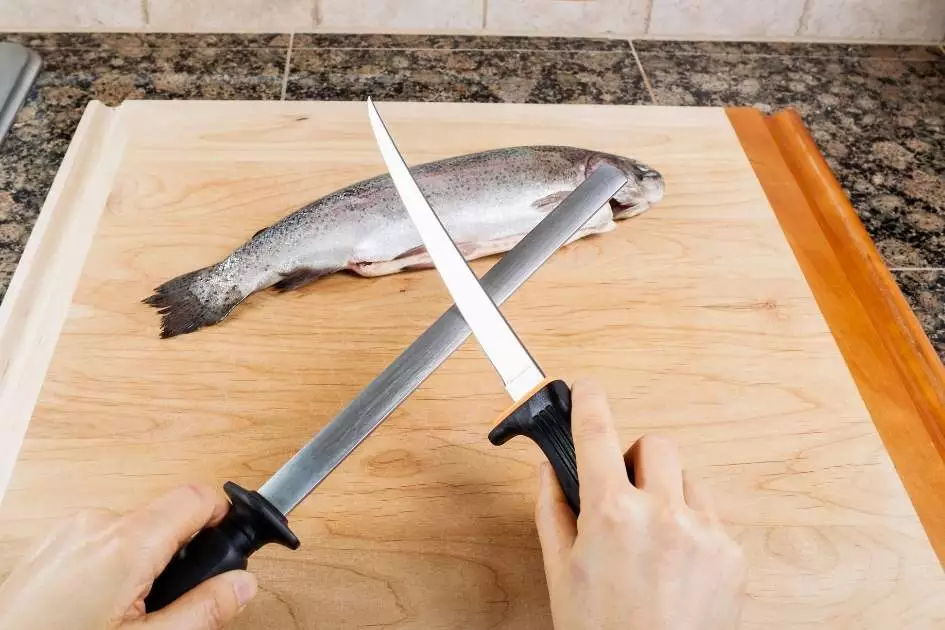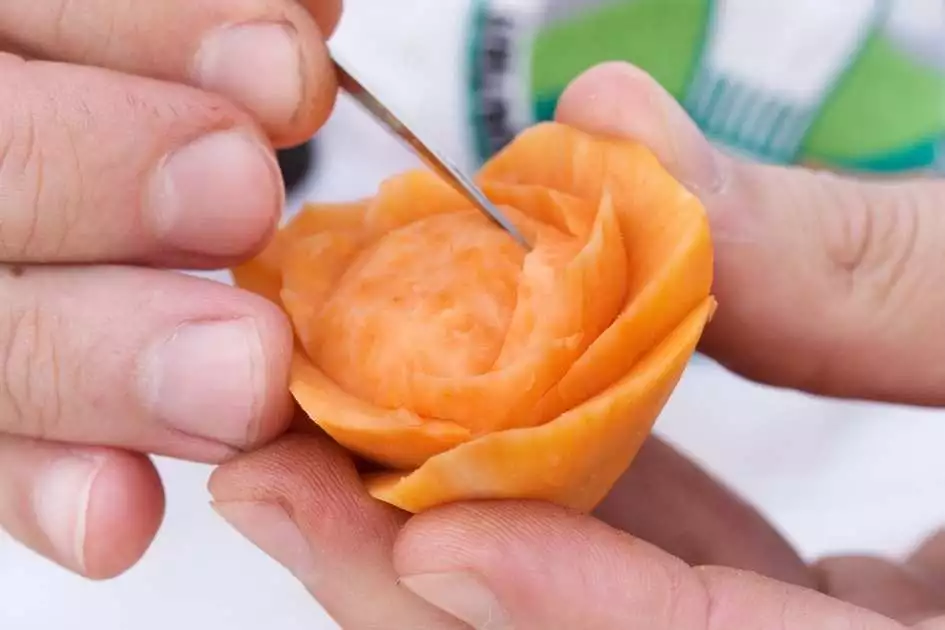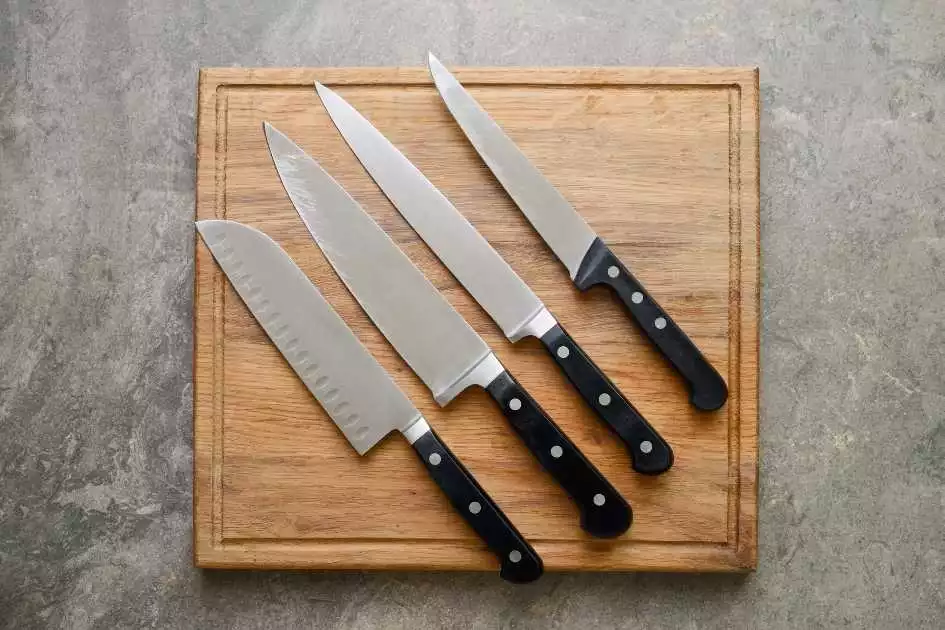The art of cooking is elevated to a higher level when a cook uses a variety of knives for different purposes. There is a paring knife to peel and cut small fruits and vegetables, a serrated knife to saw through bread, a slicing knife for large meats, and more. Apparently, each knife has a specific purpose, and using the right one brings great results.
What distinguishes fillet knives from the rest is their elongated and flexible blades, which are designed to reach even the tiniest of crevices in fish or meat. The design makes it easier for chefs to fillet and carve meat or fish with great precision. This is crucial if you’re looking for a knife that can help you make fine cuts on meat. You will get the benefit of a knife that is highly versatile and allows you to have complete control over your cutting, making it perfect for both professionals and home cooks.
In this post, we will continue to focus on what fillet knives are used for, and how they are different from other types of knives, as well as their main use.
What is a Fillet Knife and What is it Used for?
Fillet, as the name implies, is a delicate and precise operation that is meant to remove the bones from fish such as salmon and tuna. A fillet knife is a very narrow, flexible blade used for this purpose. The most common type of fillet knife has a straight edge, but serrated fillet knives are also available. If you prefer to eat fish without bones and want to clean your catch before putting it away, you need a fillet knife as an essential tool.
In addition to removing bones from fish, fillet knives can also be used to remove the skin. This is especially useful if you are cooking fish that has been previously frozen, as the skin can often become tough and difficult to remove. For the best results, it is important to use a sharp fillet knife when removing skin from fish.
Using a Fillet Knife for Skinning Fish
The most common way to remove the skin from fish is to start at the tail end of the fillet and run the knife along it, gliding between the meat and skin. To do this, cut through one side of the flesh until you reach a point where you can grab onto a piece of skin with your fingers. Then, place your fingers on either side of your fillet knife, holding the blade firmly against your skin in order to keep it in place. Slowly glide the knife towards you, letting your fingers guide it along. The skin should begin to come off easily. If it gets hard to get off, just press down harder with your fingers or cut through the flesh with a little more force.
Remember to be careful not to cut yourself! Once you have removed the skin from one side of the fillet, repeat on the other side.
Using a Fillet Knife for Removing Fish Bone
Fish skeletons are made up of very slender, flexible bones. As a result, they can be difficult to remove while cooking and consuming the fish. However, if you use a fillet knife correctly, removing bones from fish is not as difficult as it sounds.
Start by sliding the blade along the top of the fish until you reach the bone. Then, insert the tip of your knife under the bone and slowly lift it up while continuing to slide your blade underneath. Finally, cut through any connective tissue that may still be attached to remove the bone completely.
Using a Fillet Knife for Removing Fish Meat
After you have removed the skin and any bones from your catch, it is time to remove the meat. To do this, place the blade of your fillet knife at an angle against the top of the fish. Next, slide the blade gently down through the meat, pushing away from you as you move. Continue this process until all of the meat has been removed from both sides of the fish. Depending on what type of fish you are cleaning and how large it is, a single fillet can take anywhere from one to five strokes to complete.
Using a Fillet Knife for Deboning Fish
Now that you have got the fillets of fish separated from the rest of the carcass, it is time to remove any smaller bones that may still be attached. The process for doing this is similar to removing the meat, except you will want to make sure that your knife blade is as close to perpendicular to the fish as possible. For smaller pieces of fish, you can use a pair of tweezers or needle-nose pliers to remove each bone individually.
This process can be a bit tedious and time consuming, but it is well worth the extra effort to ensure your fillets are entirely boneless. When finished, you should be able to run your fingers over the surface of the fish without feeling any bones at all. It is good practice to try this before cooking a new type of fish for the very first time.

Types of Fillet Knives According to Power
There are two main types of fillet knives: electric and manual. Electric fillet knives are the easier of the two to use, as they do most of the work for you. However, they can be more expensive than manual fillet knives. Manual fillet knives require a bit more skill to use, but are generally less expensive.
If you are a beginner, we recommend starting with a manual fillet knife. Once you get the hang of it, you can upgrade to an electric fillet knife if you like.
Types of Fillet Knives According to Blade Edge
As we mentioned before, fillet knives are available with either a straight or serrated blade. Serrated blades are more common, as they tend to stay sharp longer than straight blades. That being said, when you are into detailed skin work, you might want to consider a fillet knife with a straight blade edge. You may feel more comfortable with the finer control that a straight blade provides. Ultimately, it is up to you which type of blade you prefer.
Electric fillet knives mostly come with a serrated edge design. Because they are mostly used for heavy-duty tasks like cutting through thick bones. On the other hand, manual fillet knives are available with both blade designs.
Caring for Your Fillet Knife
It is important to care for your fillet knife properly to ensure that it lasts for many years. After each use, be sure to wash your knife with soap and water. Dry it thoroughly before storing it in a safe place. You can use a knife case or an edge guard to keep your blade from becoming damaged. When you are not using it, store your knife in a place that is out of the reach of children. It is also important to sharpen your blade regularly so that it remains strong and sharp.
How to Sharpen a Fillet Knife
Fillet knives are made from high-carbon stainless steel, and they can be sharpened with a knife sharpener or steel honing rod, as well as a ceramic rod. First, wipe the blade clean with a damp cloth. With the tip of your knife resting on a steady surface, hold the sharpener at an angle so that it is parallel to your blade. Swipe the knife along the sharpener’s length, taking care to keep the blade at a steady angle. Repeat this process until you have achieved a sharp edge. Not less than five times would do.
Alternatively, you can use a honing steel or ceramic rod to sharpen your knife. So, to start off, hold the steel or rod at an angle so that it is parallel to your blade. Next, run the length of your blade down the steel or rod in one swift motion. Repeat this process about five to six times on each side of your knife.
You can also use a sharpening stone. First, soak the stone in water for about five minutes. Place the stone on a flat surface and hold your knife at a 20-degree angle to it. Using light pressure, glide the blade along the length of the stone from back to front. Repeat this motion 10 times on each side of your knife. If your knife is extremely dull, use light pressure and longer strokes to grind off extra metal. Then repeat the process with a fine-grit stone to hone the blade.
However, it is easiest to use an electric fillet knife sharpener. A one-stage knife sharpener is best for very dull knives, and a two-stage knife sharpener is best for averagely dull knives. Use the fine stage last.
Before you use your fillet knife again, wipe off any extra metal shavings with a damp cloth.
Final Thoughts
If you are a fishing enthusiast, having a fillet knife is an absolute must. This tool will help you cut your catch into portions that are the perfect size for grilling, baking, or frying.
We've put together everything you need to leverage your time and get the most out of your next filleting job. Just follow the tips and techniques in this guide, and you will be filleting fish like a pro in no time. If you are one of those people who spend long hours doing outdoor activities, then it is important that you have at least a few tools with you so that you can handle any situation.


